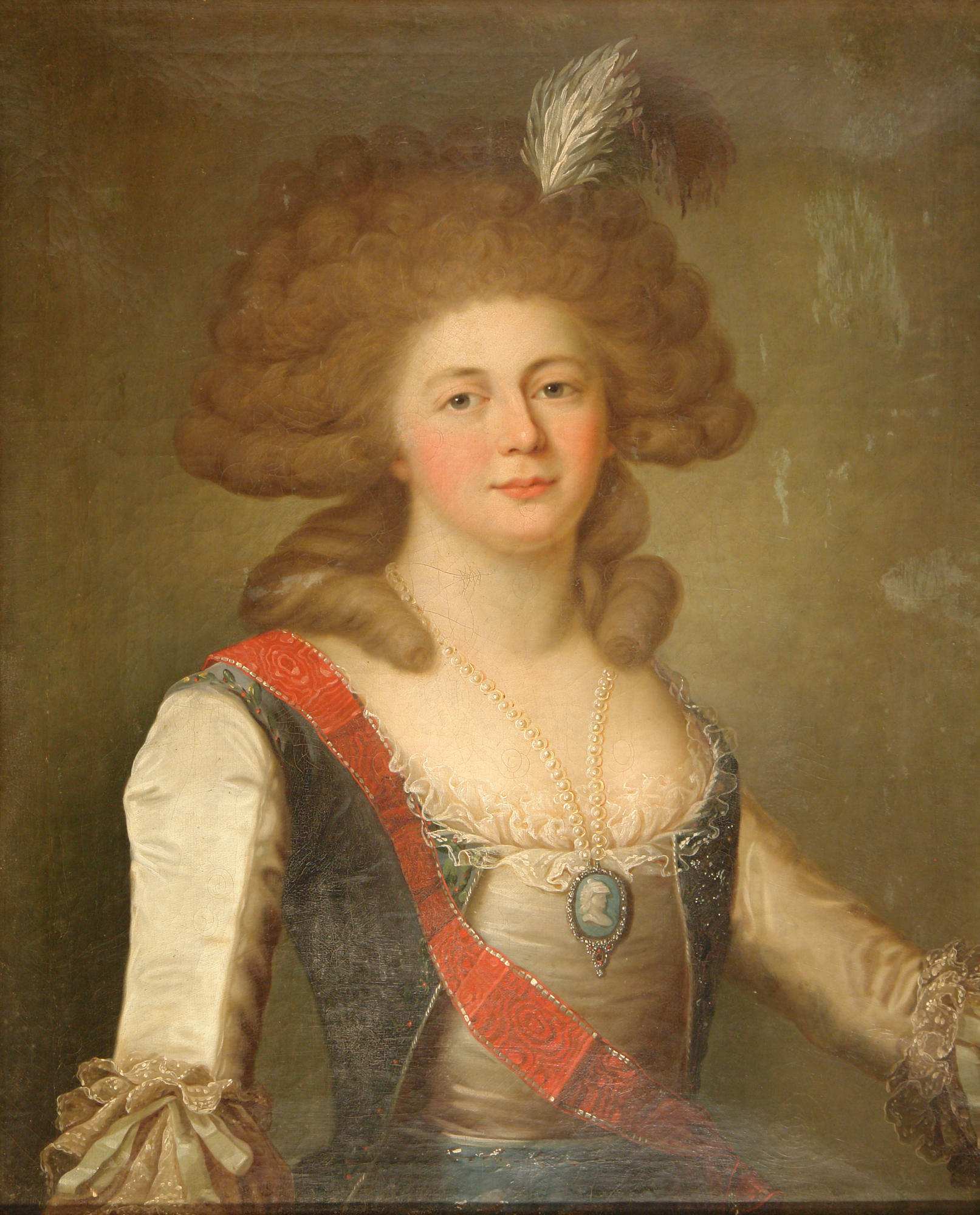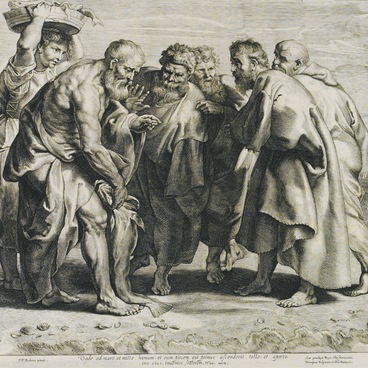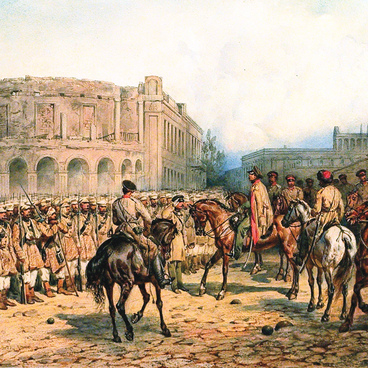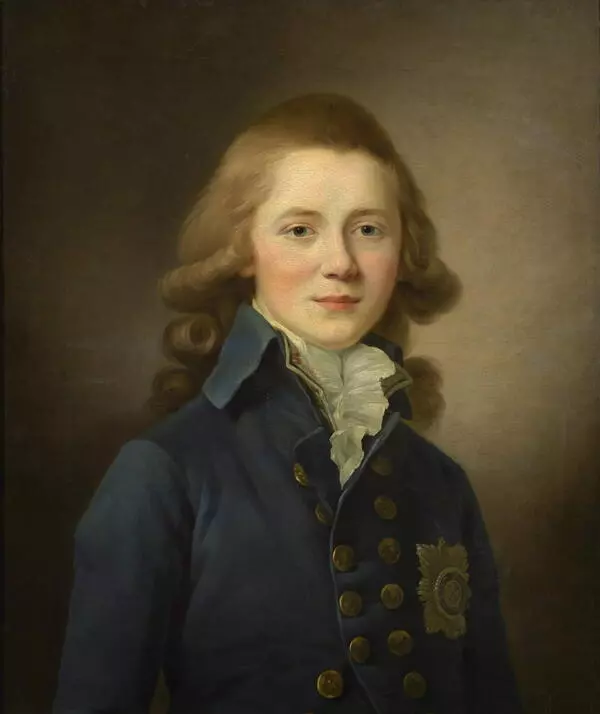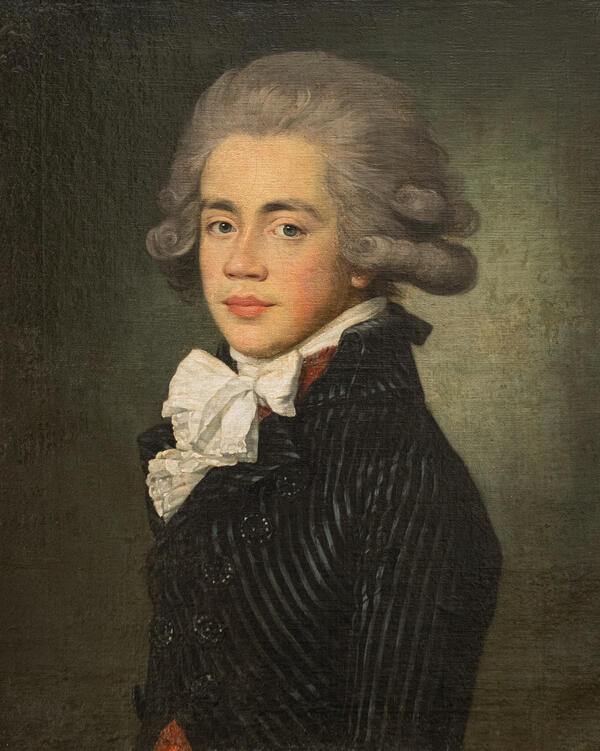Jean-Louis Voille is a typical representative of Rossika. This term is used in the history of Russian art for foreign artists working in Russia in the 18th-19th centuries, especially the ones working on commission of the Royal Court. Jean-Louis Voille lived in Russia for more than 30 years, and he is practically unknown in his home country, in France.
Voille was born on May 4, 1744, in Paris into a family of a jeweller. He studied in the Royal Academy of Art; his teacher was François-Hubert Drouais (the Junior). Voille came to Saint Petersburg as an actor and stage designer of a French theatrical company in early 1760-s. He abandoned theatre and started working as an artist; soon he won himself a name as a talented portraitist. In 1780, Voille became a court painter of the so-called “minor court” – the court of the Grand Duke Pavel Petrovich, future Emperor Pavel I. The artist created many portraits of Pavel and his wife Maria Fyodorovna, and of their children, as well as many other Russian aristocrats.
In 1793, after the French Revolution, the artist went back home. He exhibited his pieces in Paris salon, but was unable to find permanent lucrative job. After Napoleon Bonaparte came to power in 1795, Jean-Louis Voille returned to Russia, where he continued his work and lived until his death in 1806.
The Museum holds the author’s replication of the portrait of the Grand Duchess Maria Fyodorovna, the second wife of Pavel Petrovich, made in 1791-1793. The artist created the original in 1791, and currently the museum-palace in Pavlovskoye holds it. Voille did not have any apprentices, so he replicated his portraits himself. The portrait originates from the collection of counts Lazarev, close to the Grand Duke Pavel Petrovich. Until 1917, it was in Zheleznyaki estate owned by counts Golitsyn, the descendants of Lazarevs. The exhibited portrait of Empress Maria Fyodorovna belongs to the period of mature work of the artist (1780-1790-s). This is an intimate half-figure portrait, classical for Voille’s work.
Voille was born on May 4, 1744, in Paris into a family of a jeweller. He studied in the Royal Academy of Art; his teacher was François-Hubert Drouais (the Junior). Voille came to Saint Petersburg as an actor and stage designer of a French theatrical company in early 1760-s. He abandoned theatre and started working as an artist; soon he won himself a name as a talented portraitist. In 1780, Voille became a court painter of the so-called “minor court” – the court of the Grand Duke Pavel Petrovich, future Emperor Pavel I. The artist created many portraits of Pavel and his wife Maria Fyodorovna, and of their children, as well as many other Russian aristocrats.
In 1793, after the French Revolution, the artist went back home. He exhibited his pieces in Paris salon, but was unable to find permanent lucrative job. After Napoleon Bonaparte came to power in 1795, Jean-Louis Voille returned to Russia, where he continued his work and lived until his death in 1806.
The Museum holds the author’s replication of the portrait of the Grand Duchess Maria Fyodorovna, the second wife of Pavel Petrovich, made in 1791-1793. The artist created the original in 1791, and currently the museum-palace in Pavlovskoye holds it. Voille did not have any apprentices, so he replicated his portraits himself. The portrait originates from the collection of counts Lazarev, close to the Grand Duke Pavel Petrovich. Until 1917, it was in Zheleznyaki estate owned by counts Golitsyn, the descendants of Lazarevs. The exhibited portrait of Empress Maria Fyodorovna belongs to the period of mature work of the artist (1780-1790-s). This is an intimate half-figure portrait, classical for Voille’s work.
